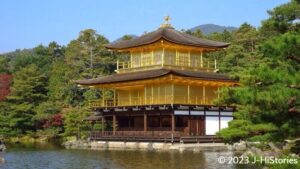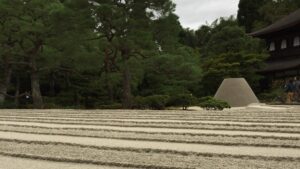Nagasaki Port, the blooming Nanban (or Namban) trade and Christianity
The Namban Screen, created by Kano Naizen, a renowned painter of the Kano School, is regarded as one of the most exceptional screen paintings on gold foil paper. This masterpiece has an impressive width of approximately 3.5 meters and comprises a pair of six-panel folding screens. The term “Nanban” refers specifically to the southern regions of Europe, particularly Portugal and Spain. The left screen beautifully depicts a Nanban boat poised to embark on a journey from a bustling port town in an Asian country. On the right screen, an animated scene unfolds at the vibrant port of Nagasaki, where cargo is being diligently dispatched. For nearly a century, Nagasaki flourished as a prominent trading port with European nations, starting with the Nanban. The matchlock guns and gunpowder brought by the trade, which began in the middle of the Warring States period (1467-1590), revolutionized the style of warfare. Let's see how the warlords took advantage of the Nanban trade.
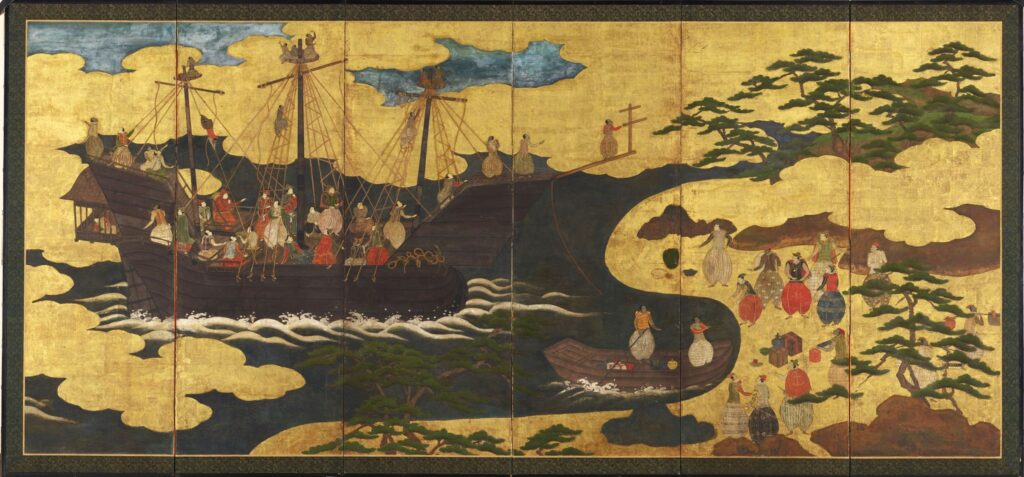
@ColBase (https://colbase.nich.go.jp)
Portugal, sailing eastward, and Spain, venturing westward, met in Japan
The momentous events of 1492, marked by Columbus’ discovery of America, and 1498, when Vasco da Gama found the Indian Sea route, propelled Portugal and Spain into an era of accelerated global expansion. Portugal, sailing eastward, successfully established colonies in various Asian countries, while Spain, venturing westward, began colonizing Mexico. Remarkably, their paths collided in the distant islands of Japan approximately a century after these groundbreaking discoveries, specifically during the mid-16th century of the Warring State Period.
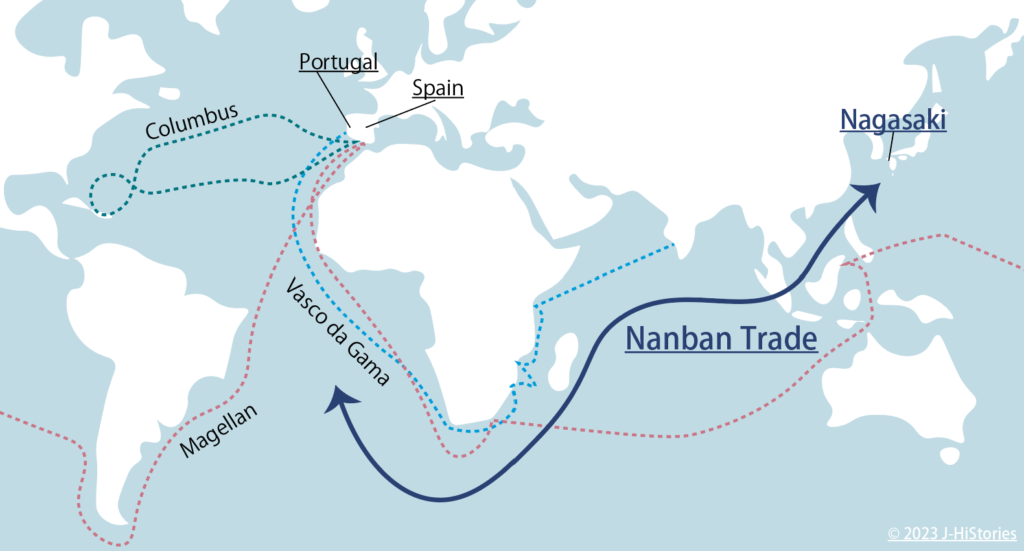
Start of the Nanban trade
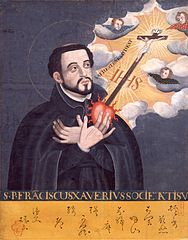
This momentous period coincided with the historic introduction of the matchlock gun in 1543 when a Portuguese vessel drifted ashore on Tanegashima Island, located south of Kyushu. Subsequently, in 1549, the arrival of the first Christian missionaries, most notably St. Francis Xavier, marked the inception of Christianity’s dissemination within Japan. The Nanban trade was marked by the exchange of gunpowder, particularly niter, as Japan lacked domestic production despite the swordsmiths’ mass production of matchlock guns. Additionally, various Western products, including medicines, food, world maps, and musical instruments, were traded for Japanese silver. The missionaries’ presence further facilitated the introduction of diverse Western cultural elements and advanced technologies, notably philosophy, Latin studies, astronomy, and more.
Daidoji, the first Christian church in Japan
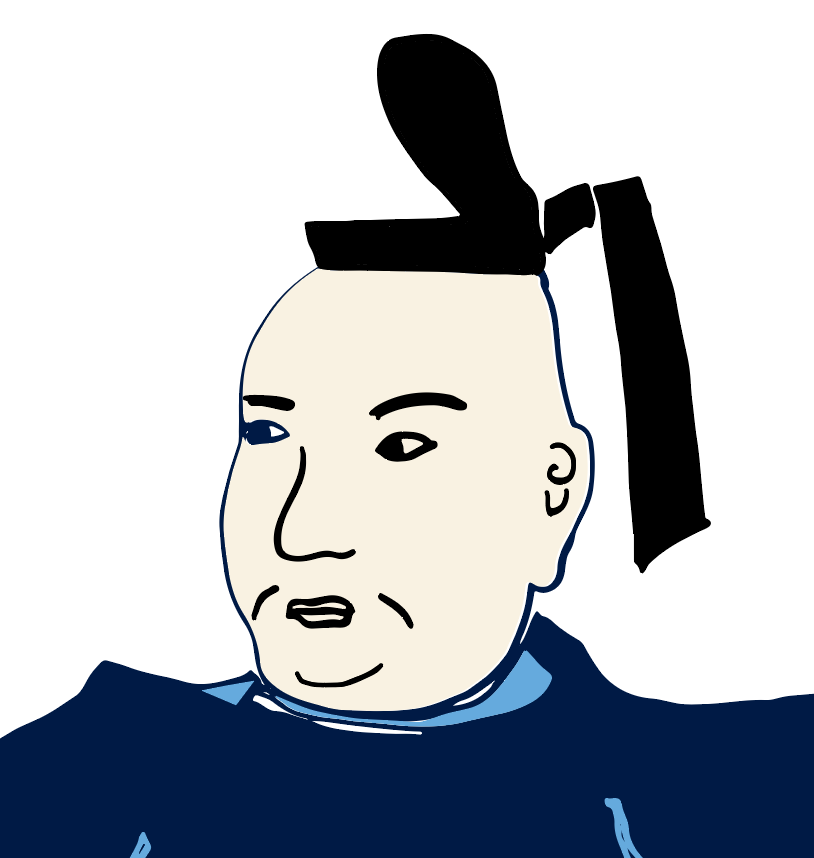
Ouchi Yoshitaka (1507-1551, 大内義孝) took over the head of the Ouchi clan in 1528 at the age of 22, as a powerful Shugo Daimyo (feudal lord and governor) of four regions: Suo, Nagato, Iwami, and Buzen. Under his rule, the Ouchi clan had a virtual monopoly on trade with the Ming dynasty in the East China Sea, through a relationship with the Hakata merchants. This trade primarily involved the export of silver and other valuable minerals, many of which came from the Iwami silver mine within its territories. Meanwhile, in April 1551, Yoshitaka met with St. Francis Xavier. During this meeting, Xavier presented Yoshitaka with a collection of rare cultural relics, including a telescope, a table clock, a rifle, and letters of friendship from the Portuguese governor of India and the bishop of Goa. Yoshitaka permitted him to proselytize in his domain and offered the prestigious Daidoji Temple as a base for missionary activities. This momentous event marked the birth of Japan's first Christian church. Twice a day, Xavier delivered sermons at the Daidoji, leading to a rapid increase in believers, with their numbers reaching approximately 500 in just two months. Unfortunately, Yoshitaka’s untimely demise during a rebellion led by his vassal, Sue Takafusa, forced Xavier to relocate to Kyushu to continue his missionary work, finding support from another Otomo clan, Otomo Yoshishige (1530-1587, 大友義鎮). Sue was also defeated by another samurai, Mori Motonari.

Matchlock guns revolutionized the style of warfare
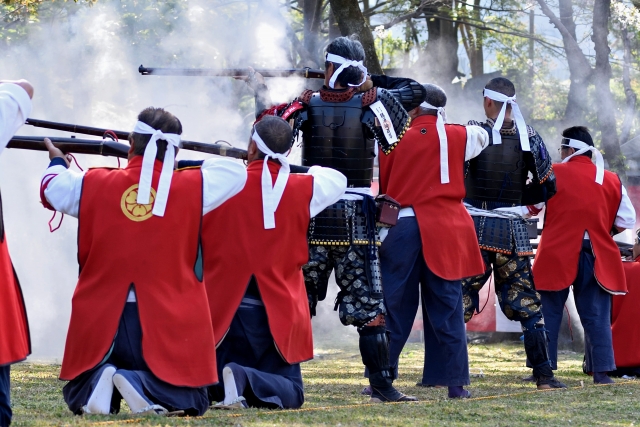
During that era, Japan consisted of numerous small warring states, each vying to expand its territory. Among these ambitious samurai, one particularly resolute figure stood out - Oda Nobunaga (1534~1582, 織田信長). Driven by his surreal vision of unifying the nation through military power, Nobunaga permitted Christian missionary work while importing significant quantities of firearms and their essential raw materials, including niter and lead. Later, in 1575, this proved a momentous victory for Nobunaga against his formidable adversary, the Takeda clan, at the Nagashino Battle. The strategic implementation of matchlock guns, utilizing continuous fire supported by a substantial stock of gunpowder, played a pivotal role in securing his triumph. Indeed, the ability to sustain a relentless barrage without depleting ammunition played a vital role in his victory, and this advantage was made possible through his engagement in the Nanban trade with merchants.

The Tensho Boy Mission to Europe
Upon earning Nobunaga’s trust, many Jesuits such as Luís Fróis, Organitino Gnecchi, and Soldo, Alessandro Valiganani came to Japan. Nagasaki thrived as the first port town opened to Europe. During Christian missionary work, one Jesuit, Alessandro conceived the idea of installing a Japanese embassy in Europe aided and supported by the Japanese Christian feudal lord, Otomo Yoshishige, who welcomed St. Francis Xavier after the death of Ouchi Yoshitaka. Young Christian Mancio Ito led the Embassy with three other noblemen. They left Nagasaki on February 20th, 1582, met with the King Phillip ll of Spain on November 14th, 1584, with Pope Gregory Xlll at Romeon on March 23 in 1585, and then returned to Nagasaki on July 21st, 1590. This was a trip that lasted some 8 years.

Nanban opened Japan to the world
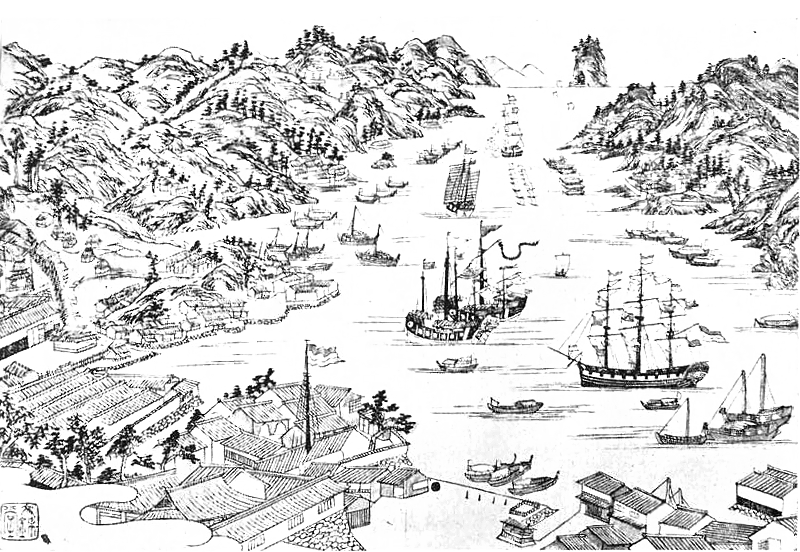
Source: National Diet Library Digital Collections_永見徳太郎 著『南蛮長崎草』,春陽堂,大正15.
https://dl.ndl.go.jp/pid/1020519 (参照 2023-08-08)
The arrival of Portuguese and Spanish ships brought transformative technologies such as firearms and gunpowder to Japan. This marked a momentous departure from Japan's traditional reliance on swords, bows, and horsemen in combat. Following the passing of Nobunaga in 1582, his vassal, Toyotomi Hideyoshi (1537-1598, 豊臣秀吉), assumed power, and unfortunately, this marked the onset of a challenging period for Christians in Japan. Enjoy the Nanban Folding Screen and feel the multifaceted impact of the trade in the various goods and the profound transformation it brought to Japan's military strategies during the tumultuous Warring States period.
Christian missionary work Timeline
| 1492 | Columbus’ discovery of America | Azuchi Momoyama Period |
| 1498 | Vasco da Gama found the Indian Sea route | |
| 1528 | Ouchi Yoshitaka took over the head of the Ouchi clan | |
| 1543 | The instruction of matchlock guns at Tanegashima | |
| 1549 | Francis Xavier arrived in Japan and started introducing Christianity | |
| 1551 | Ouchi Yoshitaka met with St. Francis Xavier | |
| 1551 | Ouchi Yoshitaka, Motonari's lord, was defeated by Sue | |
| 1551 | Xavier moved to Kyushu to continue his missionary work | |
| 1552 | Xavier moved to Goa in India and passed away | |
| 1555 | Itsukushima Battle: Motonari won against Sue | |
| 1557 | Motonari defeated Ouchi clan and expaned his terittory | |
| 1569 | Oda Nobunaga met with Luís Fróis met | |
| 1570 | Organitino Gnecchi arrived in Japan | |
| 1573 | Muromachi Shogunate ended by the 15th Shogun, Yoshiaki was ousted by Nobunaga | |
| 1575 | Oda-Tokugawa allied completely defeated the Takeda clan at the battle of Nagashino | |
| 1579 | Alessandro Valiganani arrived in Japan | |
| 1580 | Organitino built a monastery and church in Azuchi | |
| 1581 | Oda Nobunaga met with Valiganani | |
| 1582 | Japanese embassy left Nagasaki Port with Valiganani | |
| 1582 | Nobunaga was killed at Honnoji by Akechi Mitsuhide | |
| 1583 | Japanese embassy met with the King Phillip ll of Spain | |
| 1585 | Hideyoshi became Kanpaku (chief advisor to the Emperor) | |
| 1585 | Japanese embassy met with Pope Gregory Xlll at Romeon | |
| 1590 | Hideyoshi unified the nation | |
| 1590 | Japanese embassy returned to Nagasaki with Valiganani | |
| 1591 | Toyotomi Hideyoshi met with Valiganani | |
| 1597 | Hideyoshi removed Christian missonaries from Japan and executed 26 Chrisians | |
| 1603 | Ieyasu estabished Tokugawa Shogunate at Edo | Edo Period |
| 1603 | Valiganani left Japan |
Recommendations to visit
Nagasaki Museum of History and Culture
- Access: A 10-minute walk from JR Nagasaki Station
Kobe City Museum
- Access: 40 minutes from JR Osaka Station. Take JR Tokaido Main Line bound for Banshu-Ako (播州赤穂). Get off at Sannomiya Station (三宮). Then a 10-minute walk

